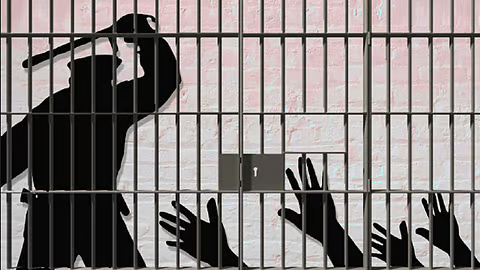




Copyright infringement not intended
Picture Courtesy: https://probono-india.in/blog-detail.php?id=77
The Supreme Court criticized the Union government for delaying the creation of a dedicated Organised Crime Investigative Agency (OCIA) to tackle sex trafficking, despite a 2015 commitment.
In 2015, the Supreme Court directed the Ministry of Home Affairs to establish an Organised Crime Investigative Agency (OCIA) and the Ministry of Women and Child Development (MWCD) to draft comprehensive anti-trafficking laws.
The Trafficking of Persons (Prevention, Protection, and Rehabilitation) Bill of 2018 was passed by the Lok Sabha, it was not introduced in the Rajya Sabha and expired in 2019.
The recent petition in the Supreme Court is about implementing the 2015 court order.
Sex trafficking is defined as human trafficking for sexual exploitation. It has been referred to as a form of modern slavery due to the non-consensual nature with which victims are forced to engage in sexual acts.
|
Human trafficking is the illegal trade and exploitation of people, commonly for forced labour, sexual exploitation, or involuntary servitude. It involves the use of force, fraud, or deception to recruit, transport, harbour, or receive individuals for exploitation purposes. |
Sexual exploitation is the most common type of human trafficking (79%). Most victims of sexual exploitation are women and girls.
Forced labour is the second most common form of human trafficking, accounting for 18% of all cases, this may be underreported because forced labour is less commonly detected and reported than trafficking for sexual exploitation.
Almost 20% of trafficking victims are children. In some parts of Africa and the Mekong region, children make up the majority of victims, with some areas in West Africa having up to 100% of trafficking victims.
|
According to the National Crime Records Bureau Report 2022, more than 172 girls went missing every day, another 170 were kidnapped, and nearly three were trafficked every day. |
Article 23(1) of the Constitution prohibits human trafficking.
The Immoral Traffic (Prevention) Act 1956 (ITPA) is the primary legislation enacted to prevent trafficking for commercial sexual exploitation.
The Criminal Law (Amendment) Act 2013 added Sections 370 and 370A to the Indian Penal Code to provide comprehensive measures to combat human trafficking, including trafficking for sexual exploitation, forced labour, slavery, servitude, and organ removal.
The Protection of Children from Sexual Offences Act (POCSO) 2012 protects children from sexual abuse and exploitation.
The Prohibition of Child Marriage Act of 2006, the Bonded Labour System (Abolition) Act of 1976, the Child Labour (Prohibition and Regulation) Act of 1986, and the Transplantation of Human Organs Act of 1994, also deal with the problem of trafficking.
India has ratified the United Nations Convention on Transnational Organized Crime (UNCTOC) to include a protocol for the prevention, suppression, and punishment of human trafficking, particularly involving women and children. The Criminal Law Amendment Act 2013 aligns with this protocol by defining human trafficking.
India and Bangladesh have formed a task force to combat cross-border trafficking, with emphasis on prevention, victim identification, repatriation, and reintegration. In June 2015, a Memorandum of Understanding (MoU) was signed to work together on human trafficking prevention, rescue, recovery, and victim reintegration.
Individuals who are experiencing economic hardship are more vulnerable to traffickers' promises of better living conditions.
Many people, especially in rural areas, are unaware of the signs of human trafficking or the dangers it poses.
India has laws against human trafficking, but enforcement is inadequate.
India shares borders with Bangladesh, Nepal, and Myanmar, making cross-border trafficking a challenge.
Traffickers use the internet to exploit and attract victims, making it more difficult to detect and prevent trafficking.
Victims commonly face societal stigma, which prevents them from seeking help and contributes to underreporting of trafficking cases.
Implement comprehensive education and awareness programs to educate communities about trafficking, and a special focus on increasing literacy and awareness, particularly in vulnerable areas.
The government should make sure that laws are strictly enforced and that traffickers face harsher penalties. Improve coordination among various agencies to better track trafficking activities.
Create survivor-centered rehabilitation programs that address victims' mental health, education, and employment needs.
Improve cross-border cooperation to combat transnational trafficking networks.
Work on poverty alleviation and economic empowerment for vulnerable populations to keep them from falling victim to traffickers.
Must Read Articles:
Source:
|
PRACTICE QUESTION Q.Critically analyze the socio-economic factors contributing to human trafficking in India. (150 words) |








© 2025 iasgyan. All right reserved